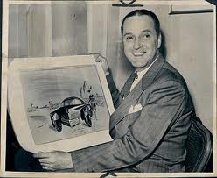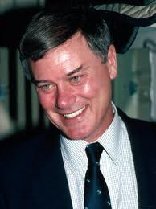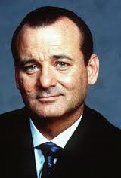
The Leaning Tower of Pisa (Italian: torre pendente di Pisa), or simply, the Tower of Pisa (torre di Pisa [ˈtorre di ˈpiːza; ˈpiːsa]), is the campanile, or freestanding bell tower, of Pisa Cathedral. It is known for its nearly four-degree lean, the result of an unstable foundation. The tower is one of three structures in the Pisa's Cathedral Square (Piazza del Duomo), which includes the cathedral and Pisa Baptistry.
The height of the tower is 183 feet 3 inches from the ground on the low side and 185 ft 11 inches on the high side. The width of the walls at the base is 8 ft 0 in. Its weight is estimated at 16,000 short tons. The tower has 296 or 294 steps; the seventh floor has two fewer steps on the north-facing staircase.
The tower began to lean during construction in the 12th century, due to soft ground which could not properly support the structure's weight. It worsened through the completion of construction in the 14th century. By 1990, the tilt had reached 5.5 degrees. The structure was stabilized by remedial work between 1993 and 2001, which reduced the tilt to 3.97 degrees.
There has been controversy surrounding the identity of the architect of the Leaning Tower of Pisa. For many years, the design was attributed to Guglielmo and Bonanno Pisano, a well-known 12th-century resident artist of Pisa, known for his bronze casting, particularly in the Pisa Duomo. Pisano left Pisa in 1185 for Monreale, Sicily, only to come back and die in his home town. A piece of cast bearing his name was discovered at the foot of the tower in 1820, but this may be related to the bronze door in the façade of the cathedral that was destroyed in 1595. A 2001 study seems to indicate Diotisalvi was the original architect, due to the time of construction and affinity with other Diotisalvi works, notably the bell tower of San Nicola and the Baptistery, both in Pisa.
Construction of the tower occurred in three stages over 199 years. On 5 January 1172, Donna Berta di Bernardo, a widow and resident of the house of dell'Opera di Santa Maria, bequeathed sixty soldi to the Opera Campanilis petrarum Sancte Marie. The sum was then used toward the purchase of a few stones which still form the base of the bell tower. On 9 August 1173, the foundations of the tower were laid. Work on the ground floor of the white marble campanile began on 14 August of the same year during a period of military success and prosperity. This ground floor is a blind arcade articulated by engaged columns with classical Corinthian capitals. Nearly four centuries later Giorgio Vasari wrote: "Guglielmo, according to what is being said, in the year 1174, together with sculptor Bonanno, laid the foundations of the bell tower of the cathedral in Pisa".
The tower began to sink after construction had progressed to the second floor in 1178. This was due to a mere three-metre foundation, set in weak, unstable subsoil, a design that was flawed from the beginning. Construction was subsequently halted for almost a century, as the Republic of Pisa was almost continually engaged in battles with Genoa, Lucca, and Florence. This allowed time for the underlying soil to settle. Otherwise, the tower would almost certainly have toppled. On 27 December 1233, the worker Benenato, son of Gerardo Bottici, oversaw the continuation of the tower's construction.
On 23 February 1260, Guido Speziale, son of Giovanni Pisano, was elected to oversee the building of the tower. On 12 April 1264, the master builder Giovanni di Simone, architect of the Camposanto, and 23 workers went to the mountains close to Pisa to cut marble. The cut stones were given to Rainaldo Speziale, worker of St. Francesco. In 1272, construction resumed under Di Simone. In an effort to compensate for the tilt, the engineers built upper floors with one side taller than the other. Because of this, the tower is curved. Construction was halted again in 1284 when the Pisans were defeated by the Genoese in the Battle of Meloria.
The seventh floor was completed in 1319. The bell-chamber was finally added in 1372. It was built by Tommaso di Andrea Pisano, who succeeded in harmonizing the Gothic elements of the belfry with the Romanesque style of the tower. There are seven bells, one for each note of the musical major scale. The largest one was installed in 1655.
Numerous efforts have been made to restore the tower to a vertical orientation or at least keep it from falling over. Most of these efforts failed; some worsened the tilt. On 27 February 1964, the government of Italy requested aid in preventing the tower from toppling. It was, however, considered important to retain the current tilt, due to the role that this element played in promoting the tourism industry of Pisa.
Starting in 1993, 870 tonnes of lead counterweights were added, which straightened the tower slightly.
If you're looking for a change-of-pace from traditional Christmas sides, then you'll love Grandma Bell's Onion Tart! It's one of Howard's favorite recipes for the holidays. This savory onion casserole practically melts in your mouth, and unlike the traditional Christmas sides, there probably won't be any leftovers the next day!
- 1 refrigerated rolled pie crust (from a 14.1-ounce package)
- 3 tablespoons butter
- 3 sweet onions, thinly sliced
- 2 eggs
- 1 cup sour cream
- 1/2 teaspoon dry mustard
- 1/2 teaspoon salt
- 1/4 teaspoon black pepper
- 1/4 teaspoon paprika
- Preheat oven to 450º. Unroll pie crust and place in a 9-inch pie plate and flute edges. Bake 8 to 10 minutes or until light golden; set aside. Reduce oven heat to 350º.
- Meanwhile, in a medium skillet over high heat, melt butter. Add onions and saute 5 minutes. Reduce heat to medium-low, cover, and sauté 4 additional minutes, or until tender. Place onions in pie crust.
- In a medium bowl, whisk eggs, sour cream, dry mustard, salt, and pepper; mix well and pour over onions. Sprinkle with paprika.
- Bake 40 to 45 minutes or until a wooden toothpick inserted in center comes out clean and crust is golden. Let rest 10 minutes before cutting into wedges and serving.
People and Places
The Lenape people populated the land now known as New York. They’re also known as the Delaware Indians. Their settlements also spread across New Jersey, Pennsylvania, and parts of Delaware and Connecticut. However, the Dutch were the first Europeans to settle the area and named it New Netherland.
Settlements and trading posts developed up and down the Hudson River. Albany, the state capital, was once called Beverwijck and the center of the fur trade. In 1624, the Dutch established a settlement on Nutten Island named New Amsterdam. Two years later, they would move to Manhattan Island, and the colony flourished.
Over time, the settlement exchanged hands between the Dutch and British several times, each without bloodshed. The first exchange, in 1664, would name it New York.
Independence & Influence
After declaring independence, the colonies later created the Articles of Confederation. Soon they discovered a stronger governing document was needed.
While New York sent three delegates to the Constitutional Convention in 1787, only Alexander Hamilton remained to sign the final document. A Federalist, Hamilton held strong opinions that could potentially influence the framing of the young nation’s new governing document. For one, Hamilton supported a life term of service for the President.
From the timeless halls of Ellis Island to the epic beauty of Niagara Falls and breathtaking Adirondacks, New York is infused with grand vistas and endless historical paths to retrace. With New York City as the epitome of a melting pot long before the term was coined, the state is full of inspiration for artists, sparks intelligent debate and philosophical discussion.





















